
Thanks to advances in technology and changes in customer habits, food delivery is now a very common thing in our lives.
Also, the Covid-19 pandemic situation forced many traditional restaurants and eateries to optimize their business around delivery as they focused mainly on dine-in services in the pre-Covid era.
With global food delivery services market expected to grow from $100 billion in 2020 to $300 billion in 2027, the ‘delivery-only’ restaurant segment will grow bigger and bigger.
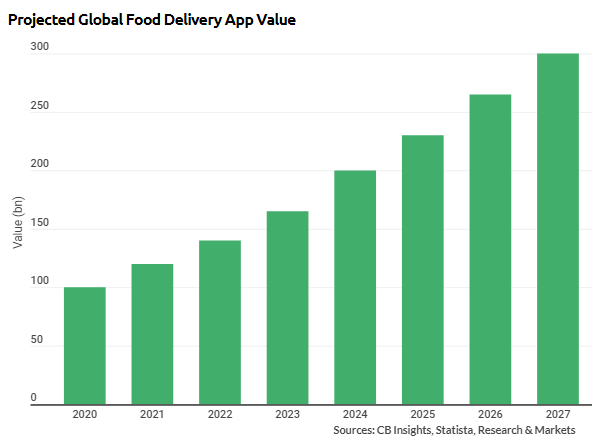
This made many restaurant owners and food entrepreneurs to consider cloud kitchens as an ideal business solution to capture the booming food delivery demand.
Since your cloud kitchen is not a customer-facing business just like traditional restaurants, people are not aware about you and that means there is difficulty in getting delivery orders.
How to solve this issue?
One effective way is to reach out to your target customers via online channels. Today’s young generation is tech-savy and more active on social media platforms.

This gives you an opportunity to build brand awareness around your food business thereby driving huge delivery orders.
Before diving deep into cloud kitchen marketing, let’s talk briefly about this type of food business.
What is a Cloud Kitchen?
A cloud kitchen is a professional cooking facility set up for delivery-based food preparation.
Simply, you can think of it as a restaurant with a kitchen space and no indoor seating for customers. Instead it has only a takeaway or delivery counter at the front.
Cloud kitchen is also known by other names such as virtual kitchen, ghost kitchen, dark kitchen, delivery-only restaurant, shadow kitchen, and commissary kitchen.
Check out this video if you want a deep dive on cloud kitchens.
What Made Cloud Kitchens So Popular?
Even though the concept behind cloud kitchen business is not new, it is the pandemic, technology innovations, and the surge in online food delivery that renewed the interest in this type of food business.
You can open your cloud kitchen outside of your target city location where rental spaces are very affordable.
Introducing Maxsemo’s FREE SEO Tools to Boost Your Search Visibility on YouTube.
✓ no ads
✓ free to use
Some major advantages of running a cloud kitchen include zero service-staff cost, access to consumer data, real-time adaptability, low rental costs, and better efficiency compared to a traditional restaurant.
There are mainly 5 ways in which food entrepreneurs and restaurant owners currently implement the cloud kitchen business model.
- Adding a delivery-only brand to your existing dine-in restaurant.
- Starting a single cloud kitchen, single brand.
- Starting a single cloud kitchen, multiple brands.
- Starting your cloud kitchen in a commercial kitchen space.
- Renting your kitchen space to multiple third-party brands.
If you want an in-depth reading on cloud kitchen business models then check out this article by CloudKitchens.com.
16 Cloud Kitchen Marketing Ideas to Get More Online Food Orders
You can leverage online platforms to promote your cloud kitchen business and to get in front of your target customers.
This helps in generating more sales and create buzz around your brand.
Here are 16 sure-fire tactics you can add in your cloud kitchen marketing strategy.
1. Instagram and Facebook
When it comes to food-related brands, Instagram is the most preferred social media platform as it gives priority to visuals and 90% of its users follow a business page.
You can showcase your wide varieties of your dishes as single image post, carousels, and in Stories.
Run offers, contests, polls, and loyalty programs. Include your website or your listing in any third-party app as the link in your Instagram profile. This will act as main call-to-action.
Also, reshare your customer’s content on your page by tracking your branded hashtags.
You can even leverage trending events to create your own memes. For example, check out this post by delivery-only brand Faasos.

Using location and hashtags, you can target your audience more accurately with your Instagram posts.
Don’t forget to respond to comments that come under your posts as it helps increasing the engagement and organic reach of your posts.
You can also gather valuable feedbacks and content ideas from these comments.
Same goes for messages that arrive in your Instagram chat section.
You can apply same strategies for your Facebook page as well.
If the Facebook and Instagram pages are linked together, then you can manage both pages via Facebook Creator Studio.
Also, you can allow Instagram Stories and Reels to appear on your Facebook page to get more audience reach.
You can publish, schedule, track performance, and manage interactions of your Facebook and Instagram pages from Creator Studio platform.
2. Twitter For Conversations, Memes, and Customer Support
Twitter’s 140-character, microblogging platform is very helpful for brands to converse directly with their target audience, via tweets.
Not only it helps in building brand awareness and generating website traffic, Twitter also helps in building relationships with your customers. That’s the important part.
You can start a conversation by:
- Asking a question related to your niche.
- Discuss a topic that is trending right now.
- Mention few people or other brands in your tweets.
- Share a meme based on trending or viral event.
- Reshare a brand’s or influencer’s tweet with your quote.
For example, here’s how food-delivery brand Zomato started a conversation with a meme based on iPhone 13 launch.
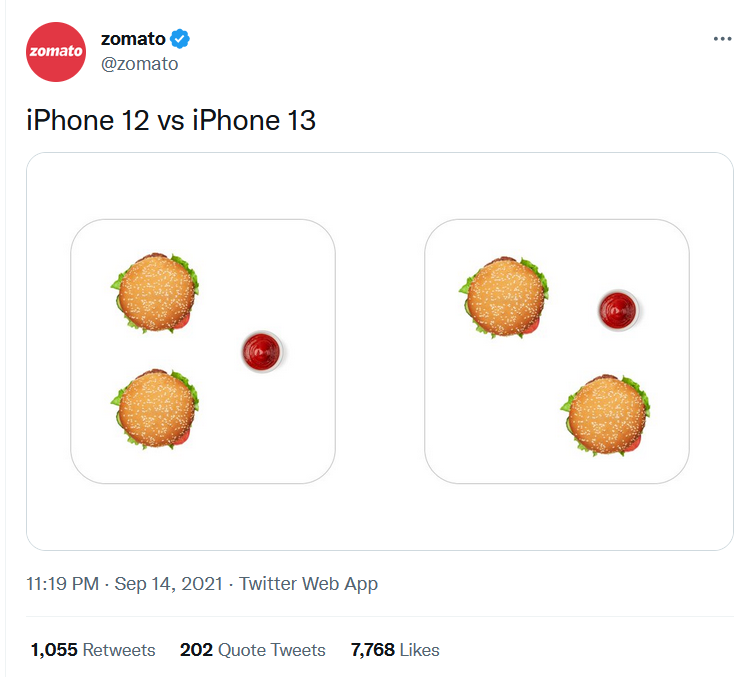
Once people reply to your tweet, a Twitter thread starts and more people may also join in the conversation.
Since hashtags are a critical part of Twitter, use niche-related hashtags in your tweets so that they reach your target audience who is actively searching and following similar topics.
You can reply to tweets posted by other brands which are mostly funny and entertaining.
When Facebook and its associated platforms faced a severe outage, Twitter shared a funny tweet after seeing heavy usage spikes on its platform.
Seeing this opportunity, several brands including McDonald’s jumped into this conversation.
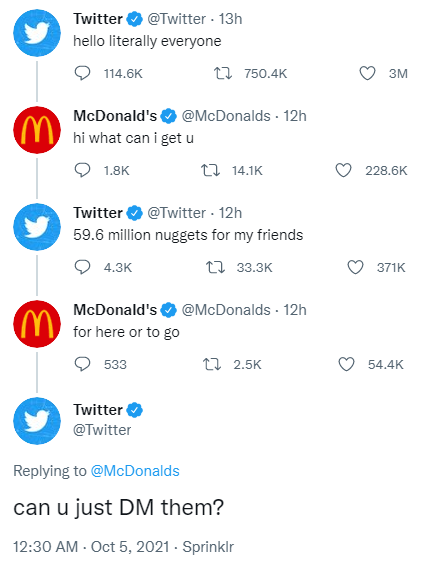
This kind of brand-brand interactions may become viral and people start talking about them on other social media platforms.
Sometimes, mainstream media will pick up “meme-worthy” tweets as news. All of this will boost up your overall brand impression.
These conversations also will help you gain more active followers for your Twitter page, organically.
Do you know that Twitter can also act as an effective customer service tool?
People often come to this platform to share their experiences of using a product or service. It can also be a complaint or raising an issue they are facing at that moment.
Respond to these queries and grievances carefully and make sure to provide your customers with an effective solution.
Here’s how local delivery-only brand Biryani By Kilo responded to a customer’s tweet about their food’s quality.
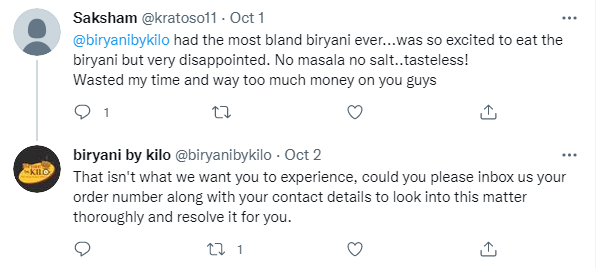
You can also take the interaction to Twitter’s Direct Message, as the chat will help you to connect with your customer seamlessly and without disruptions.
Add Twitter in your cloud kitchen marketing arsenal if you are looking for a platform that can help in building brand awareness, media attention, and for customer support.
3. WhatsApp Business App
You cannot ignore WhatsApp since you are running cloud kitchen business catering to your local customers.
You can use WhatsApp Business app (free to download) to personally connect with your customers, answer their queries, and highlight your products and services.
On your Whatsapp business profile, you can add your email ID, link to your website, business description, location, and you can create a catalog to showcase your products and services.

There are special tools available on WhatsApp to automate, sort and quickly respond to messages.
You can even connect your WhatsApp with your Facebook and Instagram pages.
By using this app, you can provide personalized customer support, remind your customers about promotions, and get more word-of-mouth publicity.
Check out this article on how to leverage WhatsApp to grow your local business presence.
4. Optimize Your Listing in Food Delivery Apps
When it comes to third-party food delivery apps, you need to make sure that your cloud kitchen business listing is well optimized.
Make sure that you tie-up with those food delivery apps that are genuine, brand recognition, and have high customer usage in your service locations.
Add relevant and updated information regarding your business, list out all the available dishes with their price and (real, not stock) images.
Don’t forget to review the ratings you receive from your customers via these apps.
If your main priority is generating more sales from food delivery apps, then include this tactic in your cloud kitchen marketing strategy.
5. Leverage Video Content
You can’t ignore video that easily when it comes to cloud kitchen marketing.
Studies show that 57% of consumers want to see more video content from a brand or business they support.
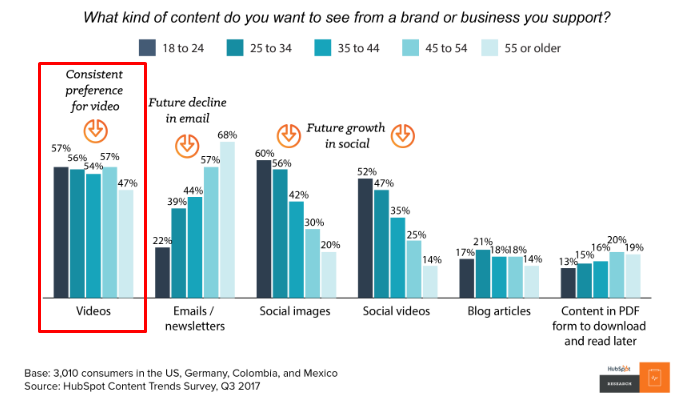
Create more video content and that doesn’t mean making general business explanatory videos.
You can share recipe videos, cooking tips, safety measures while making delivery, company milestones, customer feedbacks, and behind-the-scenes of your food preparation.
If you are focusing your video campaigns on Youtube, Instagram Video (IGTV), and Facebook, you can also conduct live sessions with your audience/followers.
It can be hosting Q&A, new product announcement, running a contest, or a live interview with a celebrity chef.
You can also leverage short video platforms like TikTok, Instagram Reels, Snapchat, and Youtube Shorts.
Short-form video has become the most favorite content consumed by today’s younger generation. Also, it is a quick and easy way to consume information.
Here’s a Reels video showing a Dominos pizza maker what he can do in just 14 seconds.
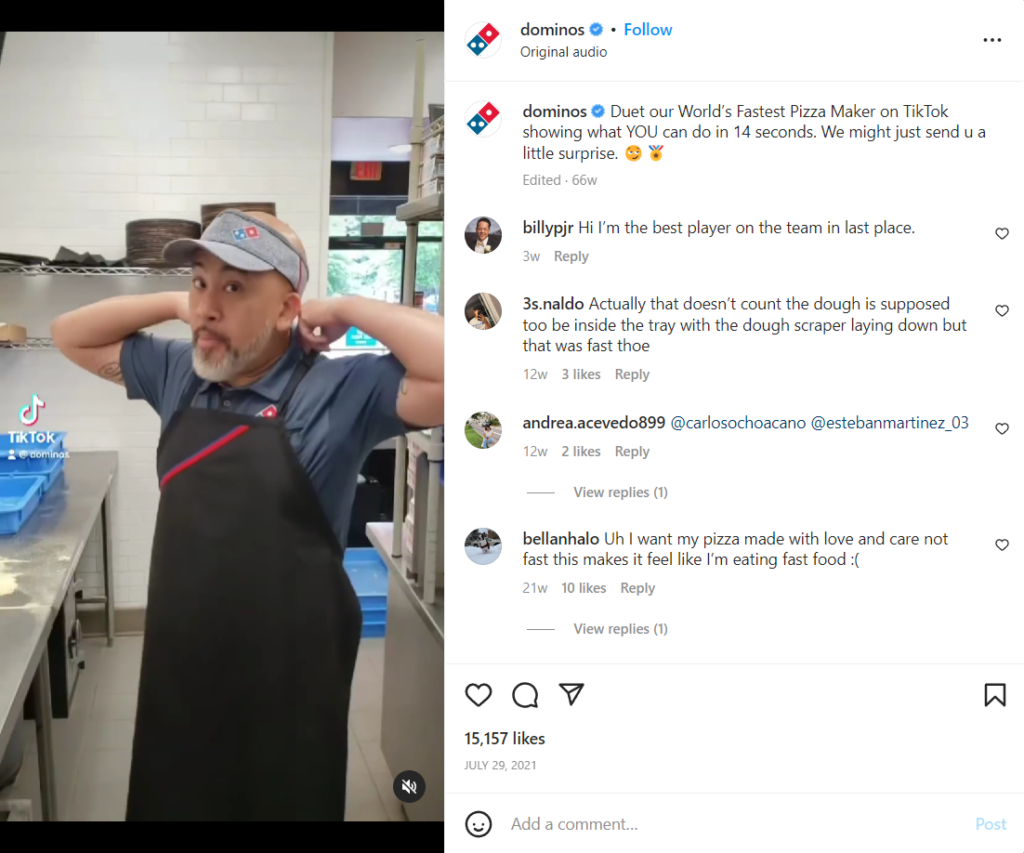
You can attract younger audience (your future customers) by using educational and entertaining content based on your niche.
You can convert your existing videos into short video clips and also use content created by your customers for TikTok and Reels.
You can use tools like Canva, InVideo, Renderforest, and Animoto to create videos from scratch or use their pre-built templates.
6. Website (and App) For Online Food Ordering
Having a mobile-friendly website helps your food business in building online presence and brand identity.
You can list your opening hours, contact information, your menu, location address, and a blog, if possible.
You have the option to build an online food ordering platform on your website and a mobile app for the same.
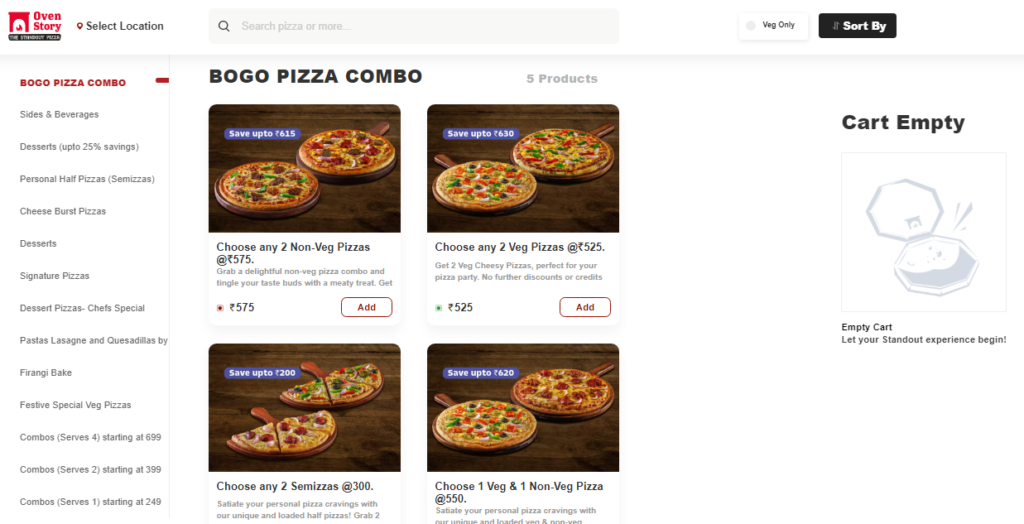
It will help you overcome the dependence of third-party delivery apps and you can use the same platform when you expand to other locations.
To build your online ordering platform in your website and mobile app, you can use the customizable software provided by GloriaFood and Upmenu.
You can use anyone of these tool to purchase your own branded domain name, web hosting, and to build a customizable website: Bluehost, Namecheap, WordPress.com, Domain.com, Inmotion Hosting, Hostinger, or Shopify.
7. Build Your Google Search Presence with SEO
You need to optimize your website on Google to increase your brand presence in your locality.
Customers will look for restaurant brands in their locality through Google search. They will explore wide varieties of food options including delivery in their locality.
Make a list of relevant and high-intent keywords that include terms like “online food order”, “food delivery in <location>”, “delivery-only restaurants in <location>”, “cloud kitchen business”, “online restaurants in <location>”, etc.
You can use tools like Ubersuggest, ahrefs, and Semrush to find local search queries that matches your requirements.

If you have cloud kitchen business presence in multiple regions, you need a CDN service to increase your site’s loading speed, driving high website visits and thereby more orders.
You can also set up a blog to create good content on relevant topics like new cuisines, recipes, cooking tips, kitchen cleanliness tips, etc.
By producing more blog content, you can target relevant keywords and attract more traffic to your website.
With a proper call-to-action, you can divert this blog traffic to your online food ordering platform.
You can also repurpose the same blogs into video clips, carousels, infographics and other forms of content for your social media pages.
8. Optimize Your Google My Business Listing
Google My Business is an online business directory (similar to Yellow Pages) offered by Google where you can list your local business for free.
One of the simplest ways to gain more local search traffic and customers is to optimize your Google My Business (GMB) listing.
For your cloud kitchen business, you can list your business category, contact information, address, business description, menu offerings, service hours, service options, and include a link to your online ordering app or third-party app.
Here’s a screenshot of GMB listing of delivery-only coffee brand Kaffeehaus in Google search.
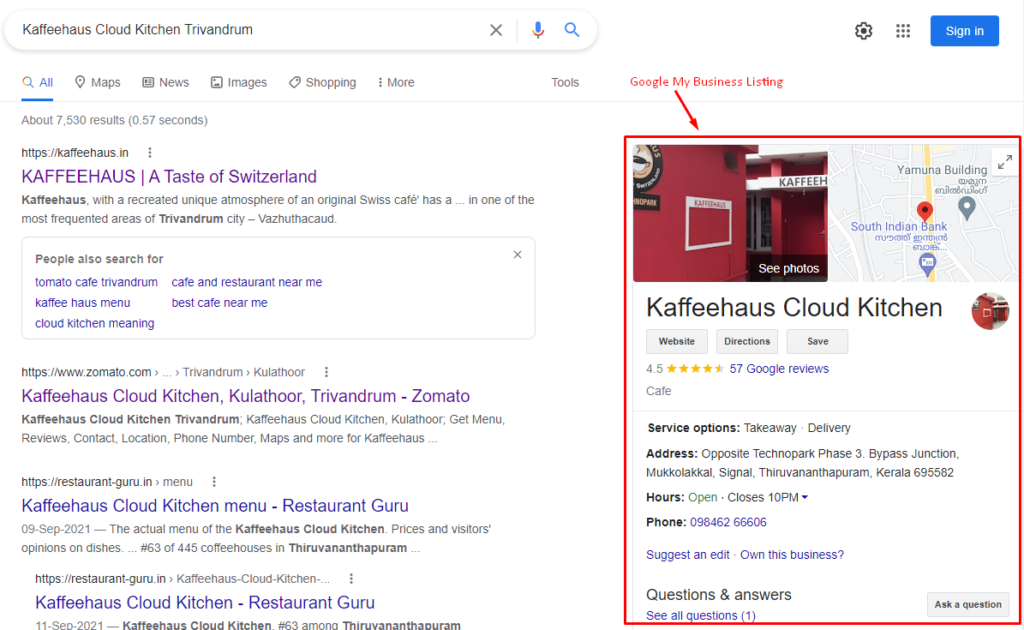
You can also add images and videos related to your business in GMB to create authenticity to your customers.
Users can post their reviews (along with photos) about your business on GMB. Make sure you respond to them accordingly.
Also, Google will display reviews/ratings (of your business) from other relevant websites into your GMB profile.
Google will keep on introducing new features and updates into GMB as they focus on helping small and local enterprises.
This means you will get more opportunities to display your cloud kitchen business listing more prominently on Google search results.
9. Maintain Positive Reputation Online
When your customers start to recognize your cloud kitchen business as a brand, you have to maintain that reputation in a positive way.
For a food business, maintaining a positive reputation is important to sustain in the long run.

Respond to reviews, feedbacks, and complaints that appear in social media, discussion forums, and review websites.
You need to keep track of online conversations that mention your business.
This is to ensure that there is no misinformation, frauds, spamming, and fake recruitments spreading in the name of your business.
There are various tools available to monitor your brand mentions on various channels. You can use these brand mentions to boost up your SEO as well.
You can also leverage press releases for managing your brand reputation.
10. Email Marketing
Email is one of the few digital marketing channels where you can build connections with customers through personalized content.
You can use it grow your base of loyal customers and convert them into your brand promoters.
It will be easier to collect customer email addresses if you have an online food ordering platform in your website or app.
Another way to collect email IDs is by rolling out customer loyalty programs, running contests, and through social media promotions.
You can send your customers with personalized offers, coupons, referral programs, newsletters, and even emails that show your appreciation.
For creating your email campaigns, you can use platforms like Mailchimp, MailerLite, Sender, and Campaign Monitor.
11. Collaborating with Influencers
You can collaborate with influencers to create word-of-mouth about your cloud kitchen business.
These influencers can be website bloggers, Youtubers, and other social media content creators with a huge following.
You need to find a niche-based (food or travel) influencer with active and engaging followers.
You can invite them for a tour inside of your kitchen or send them few dishes with hopes that they share it with their followers.
Here’s a Pune based food blogger ‘themillionthefoodie’ mentioning about a new cloud kitchen on her Instagram page.
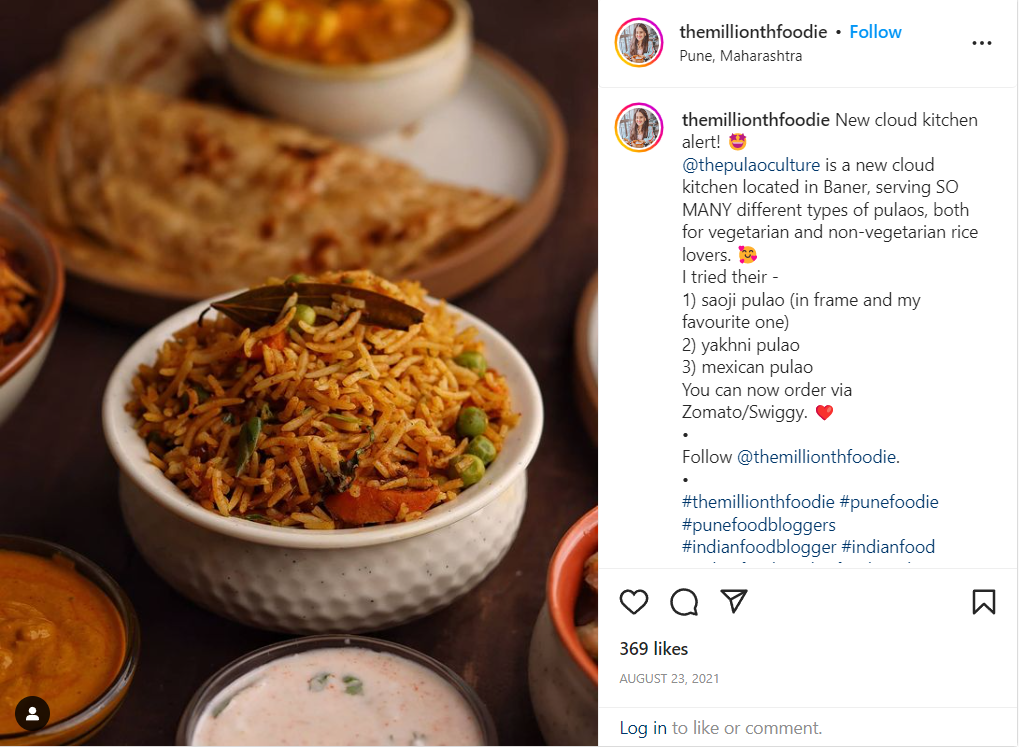
You can also ask them to mention your business to their followers by sponsoring their content creation.
There are influencers with millions of followers and there are influencers with less than 50K followers.
You can collaborate with nano-influencers who are highly niche-focused and have small yet highly engaging followers.
Make sure that they are genuine and trustworthy before contacting them for collaboration.
If you are an entrepreneur with a strong personal brand, you can leverage your ‘influencer’ status to grow the reach of your cloud kitchen venture.
12. Digital Advertising
If you want to take advantage of a particular season (Christmas, New Year, sport event) to get more visibility and orders, then you can rely on digital advertising.
There are several online channels that provide platforms to perform paid advertising campaigns. The most popular platforms are Google Ads and Facebook Ads.
Using Google Ads, you can target users in Google search, YouTube, mobile apps, and Google partner websites.
You can experiment with text, banner, and video formats in your ad campaign.
Similarly, you can use Facebook Ads to target your customers in Facebook’s core platform and Instagram.
13. Offline Media
Instead of relying only on online channels, you have the choice of including offline media (like local TV channels, radio stations, and print media) into your cloud marketing strategy.
They are all constantly on look out for new ideas for their next news-worthy content.
You can share your story to them.
14. Competitor Analysis
Do you know that your competition can help in developing your cloud kitchen marketing strategy?
Analyzing competitors in your same and related niches can give you insights on their social media activities, content strategy, SEO performance, ad campaigns, offline presence, and more.
There are chances of competitor bidding on your branded search queries to place their ads on top of your Google search results.

Also, some may come up with devious ways to tarnish your brand reputation through fake negative press and reviews on online platforms.
So, you need to monitor your competition and take steps accordingly.
15. Leverage Referral Marketing
You can encourage your existing customers to share their buying experience from your cloud kitchen with their friends and family.
By spreading positive word-of-mouth about your business by your existing customers can bring in new customers. You can reward existing customers who bring referrals with discount coupons, cash rewards, and freebies.
16. Add User Generated Content into the Marketing Mix
You can request your loyal customers/followers to create content for your brand and use that content in your marketing campaigns. The content can be photos, videos, reviews, testimonials. etc.
Final Thoughts
Hope my tips may help in creating your cloud kitchen marketing strategy that satisfies your budget and business requirements.
You need to test and measure your campaigns to find a winning strategy.
Depending on the size, price, and timeframe of the project, you can either build an in-house team, hire a digital marketing consultant, or an outside agency to handle it.
What are your thoughts on cloud kitchen marketing? Let’s have a conversation in the comments.





There is hardly any industry that has not been adversely affected by the pandemic. That’s why cloud kitchen is the best
Thanks for sharing your thoughts. 🙂
thanks for sharing the information.
You’re welcome. 🙂
This was very educational especially for someone interested in the industry. Thanks for the insights.
Hi Sean,
Glad you found my article helpful. 🙂